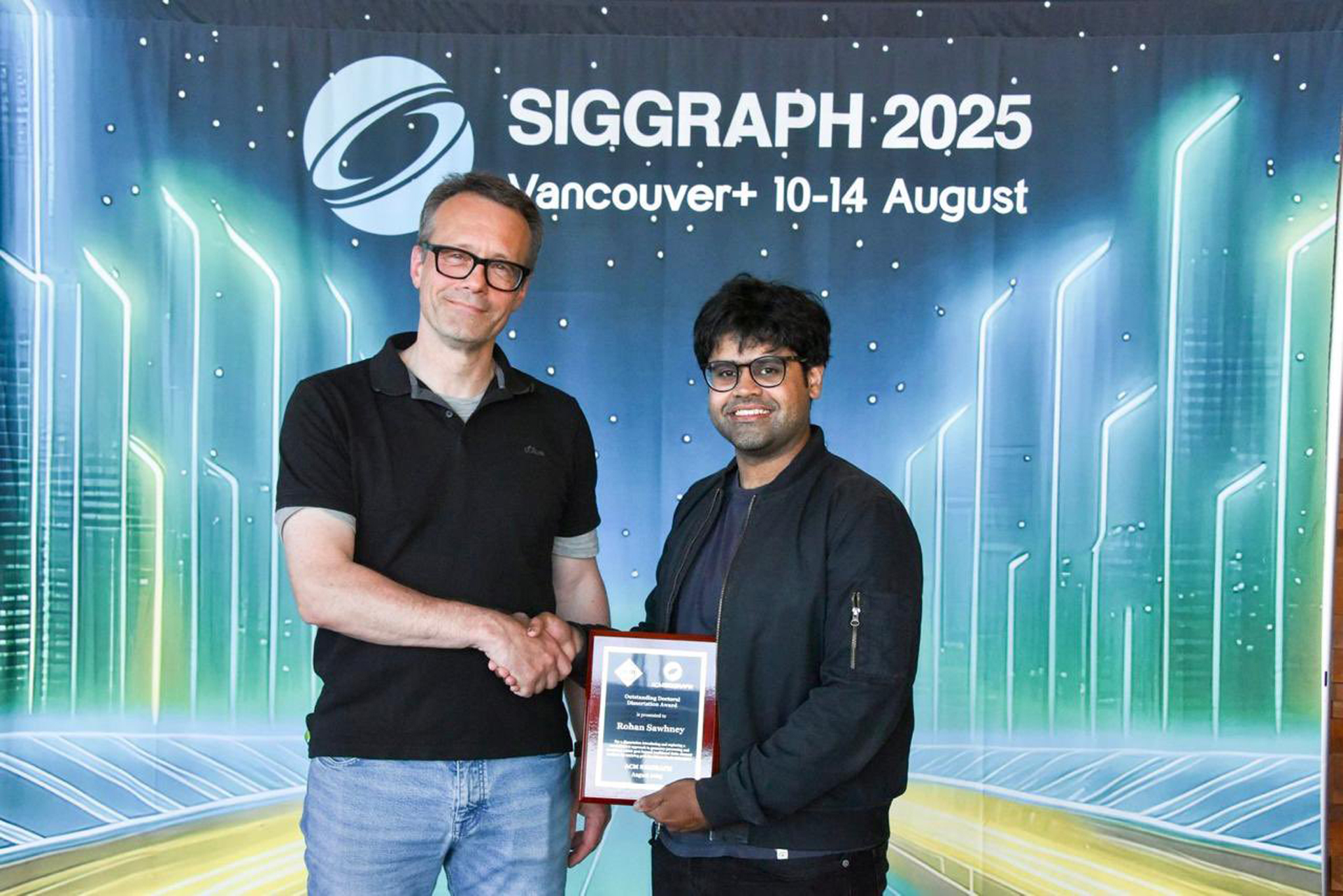SIGGRAPH 2025 Outstanding Doctoral Dissertation Award: Sawhney
Awardee(s):
Award:
-
Outstanding Doctoral Dissertation Award
Dissertation Title:
- Monte Carlo Geometry Processing: A Grid-Free Approach to Solving Partial Differential Equations on Volumetric Domains
Description:
For a dissertation introducing and exploring a revolutionary approach to geometry processing and simulation which goes beyond traditional finite element methods by applying grid-free Monte-Carlo techniques.
ACM SIGGRAPH is pleased to announce Rohan Sawhney as the 2025 recipient of the Outstanding Doctoral Dissertation Award. The dissertation coherently integrates deep theory, algorithm development, and practical implementation, enabling efficient simulations on highly detailed, complex geometries. Sawhney’s thesis proposes and explores a fundamental paradigm-shift in the way geometry processing and physical simulations are performed in Computer Graphics and other fields. By using Monte Carlo techniques he avoids the critical and error-prone domain discretization step that is required by traditional finite element methods. The immense potential and deep insight of Rohan’s work emerges from a unifying Monte Carlo perspective on geometry processing, for simulation and rendering.
Sawhney starts out from the observation that geometric models in Computer Graphics today are complex and intricate, have rich surface detail, and depending on the source, may have self-intersections, holes or other artifacts that prevent them from being easily used in geometry processing and simulation frameworks for partial differential equations. Moreover, one might seek solutions on only a sub-region of the geometry, rather than requiring to simulate the entire region that may have millions or billions of polygons. Thus, he asks a revolutionary question of whether we can develop grid-free methods that simply operate in the continuous volume for simulation without requiring a discrete grid or mesh. The audacity of this question is noteworthy: for decades physical simulation in Computer Graphics has relied on the finite element method utilizing discretized domains. While Computer Graphics has previously exploited Monte Carlo methods in rendering, there was never a clear analogy in physical simulation approaches, which largely remained finite element- based. Upending this paradigm in simulation is a truly revolutionary advance.
In order to accomplish this goal, a broad range of scientific innovations is required, covering the entire spectrum from sophisticated mathematical formulations to highly efficient parallel algorithms and powerful geometric data structures. Rohan Sawhney’s dissertation has already inspired a considerable amount of follow-up work by other researchers in the field and has proven superior in many practical applications.
The committee also decided to award an honorable mention to Suyeon Choi for ground-breaking work towards the development of holographic near eye displays and to Silvia Sellan for a truly impressive dissertation on robustly and reliably processing geometric models “in the wild.”





